25 Common Baking Mistakes You’re Likely Making Every Day
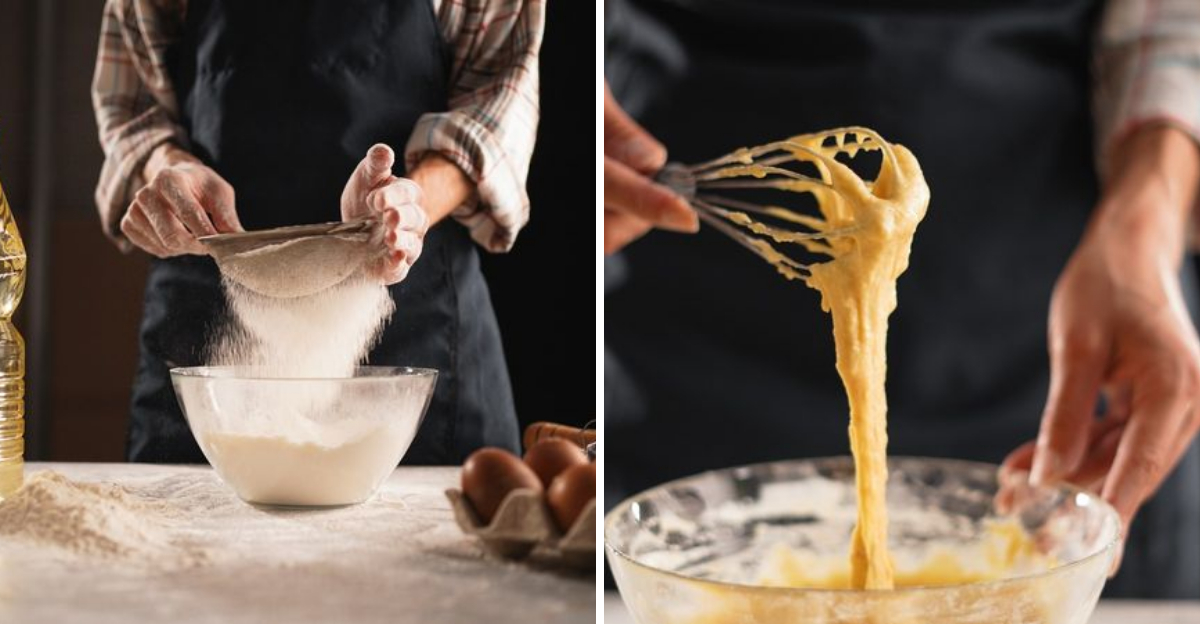
Baking is a delightful art, but even seasoned bakers often encounter pitfalls. Small missteps can lead to less-than-perfect results, and understanding these common errors can transform your baking experience. From the temperature of your ingredients to the way you measure flour, every detail counts in creating that perfect dish. Here are 25 everyday mistakes that you might be making in the kitchen and how to avoid them, ensuring your baked goods come out perfect every time.
1. Not Preheating the Oven Fully
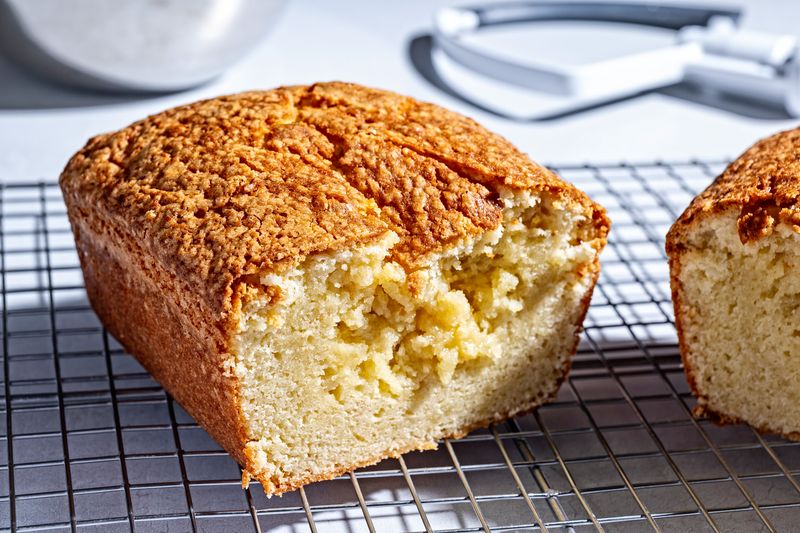
Starting your bake in a lukewarm oven spells disaster. Oven temperatures must be fully reached before baking begins, as premature heat application can affect texture and rise.
If you’re impatient, you might find your cake unevenly baked with parts that are dense and heavy. An oven thermometer can be a baker’s best friend, ensuring that your temperature dial is accurate and reliable.
If time is of the essence, consider setting your oven to preheat as one of your first steps to streamline the baking process.
2. Opening the Oven Door Too Often
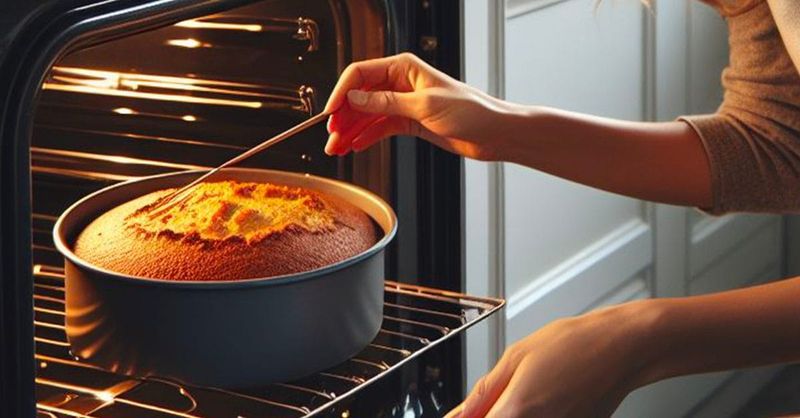
Resist the urge to peek! Every time you open the oven, precious heat escapes, causing a drop that can lead to uneven baking.
Cakes may sink, and cookies can spread if the oven temperature fluctuates excessively. Instead, rely on your oven’s interior light and window to monitor progress, and trust your timer.
Patience is a virtue in baking; a consistent environment ensures baked goods rise properly and bake evenly, turning out as expected every time.
3. Using Expired Baking Powder or Soda
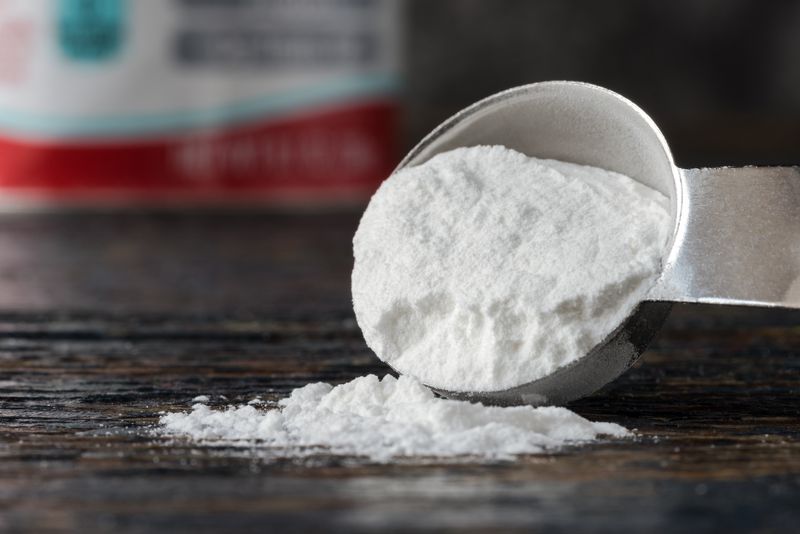
Expired leavening agents result in sad, flat cakes. To test their potency, add a teaspoon of baking powder to hot water or baking soda to vinegar.
If it fizzes, it’s good; if not, it’s time for a replacement. Fresh ingredients are crucial for achieving that coveted light and fluffy texture.
Keep these pantry staples up to date and store them in a cool, dry place to maintain effectiveness, ensuring that your baked creations rise to every occasion.
4. Scooping Flour Straight from the Bag
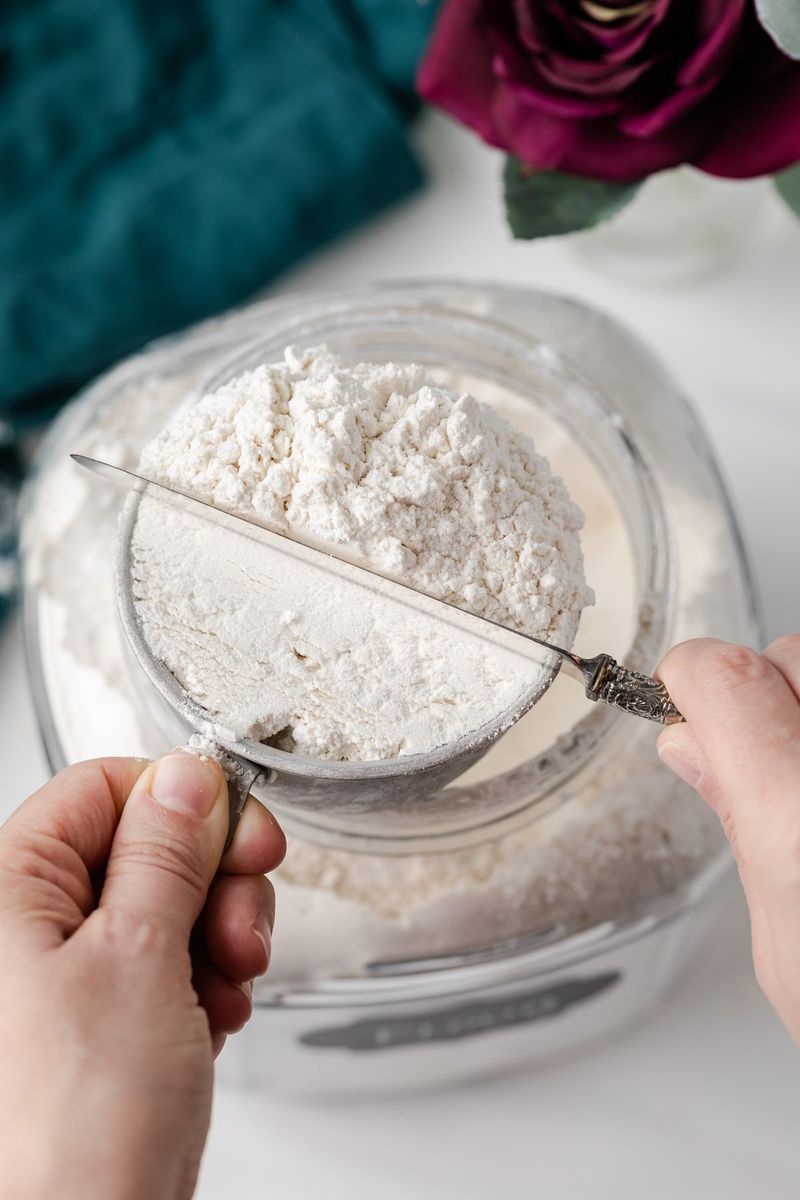
Directly scooping flour from the bag can lead to overpacking, resulting in dense, heavy baked goods. Instead, use a spoon to transfer flour into your measuring cup, then level it off with a knife.
This method ensures accuracy and consistency in your baking, avoiding variability in dough or batter texture.
Precision in measuring dry ingredients is crucial, as too much flour can drastically affect the final product, leaving you with less-than-desirable results.
5. Overmixing the Batter
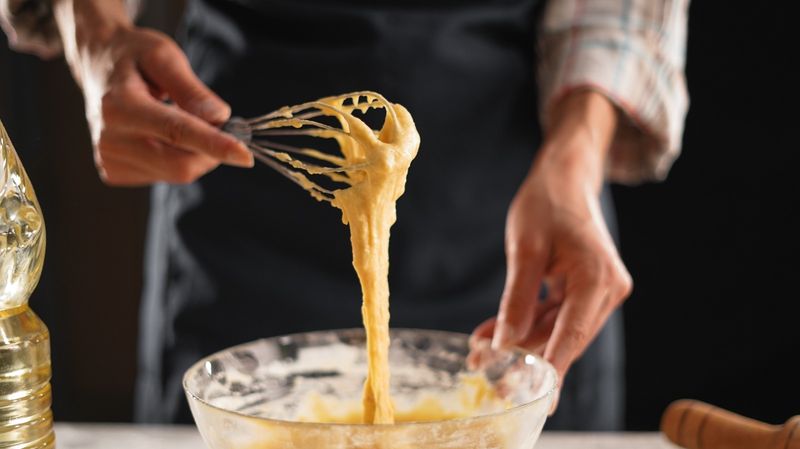
Overmixing might seem like a sure way to combine ingredients thoroughly, but it can develop gluten, leading to dense and rubbery baked goods.
Mix just until ingredients are combined, maintaining a light touch to preserve delicate textures.
Whether you’re making muffins or cake, gentle folding helps retain air and fluffiness, creating a delightful end product. Avoiding overmixing is key for achieving that tender, melt-in-your-mouth experience.
6. Guessing on Measurements
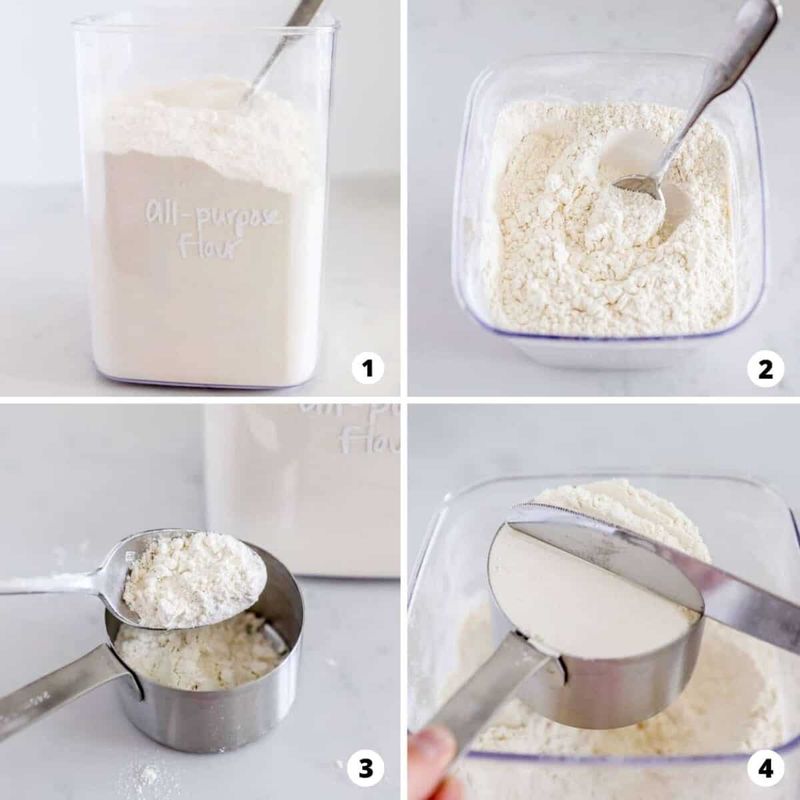
Baking is a science, and guessing measurements can throw it all off balance. Accuracy in your measuring tools is essential for success.
Invest in a good set of measuring cups and spoons, and always level off dry ingredients with a knife for precision.
Carefully measured ingredients ensure consistency, preventing a baking disaster and giving you the perfect result every time.
7. Not Using Room-Temperature Ingredients

Cold ingredients can inhibit proper emulsification, leading to uneven textures in your baked goods. Room temperature ingredients blend more seamlessly, providing a smooth batter.
Plan ahead by setting out eggs and butter well before you start baking.
This small step can make a big difference in achieving a perfect crumb and rise. When ingredients are the same temperature, they incorporate smoothly, ensuring a harmonious bake.
8. Melting Butter When It Should Be Softened

Softened and melted butter behave very differently in baking. Melted butter can lead to greasy, dense pastries when a recipe calls for softened.
If you’re short on time, try grating cold butter or cutting it into small pieces to speed up the softening process.
Planning is crucial here, as softened butter creamed with sugar can create a light, airy texture in cakes and cookies. Properly softened butter ensures optimal texture and flavor.
9. Overfilling Cake or Muffin Tins
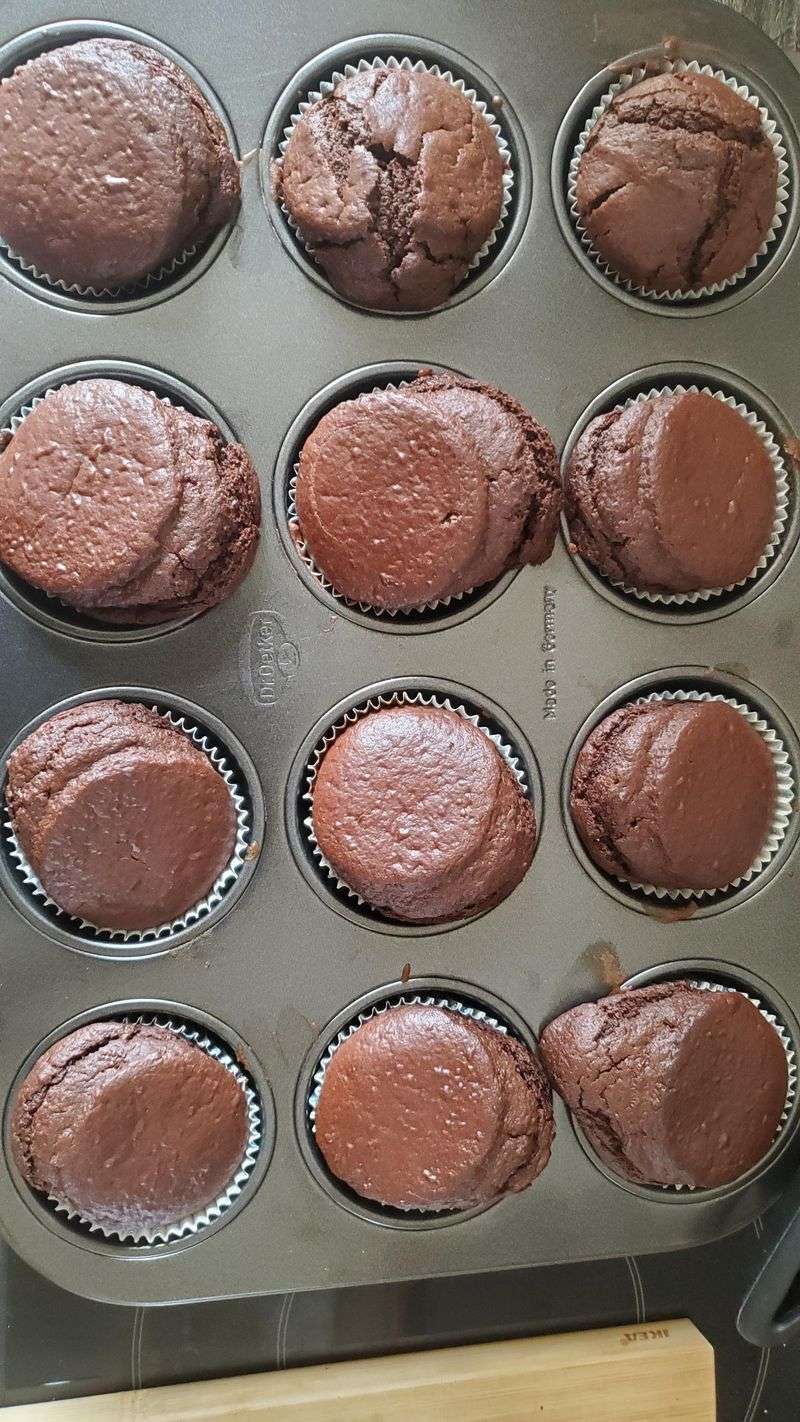
Filling cake and muffin tins too high can result in overflow and uneven baking. Stick to the two-thirds rule, which allows room for rising during baking.
Using an ice cream scoop for portioning can help maintain uniformity, ensuring even baking and a tidy presentation.
A little restraint in filling goes a long way in achieving beautiful and well-formed baked goods that rise perfectly without making a mess.
10. Ignoring Oven Hot Spots
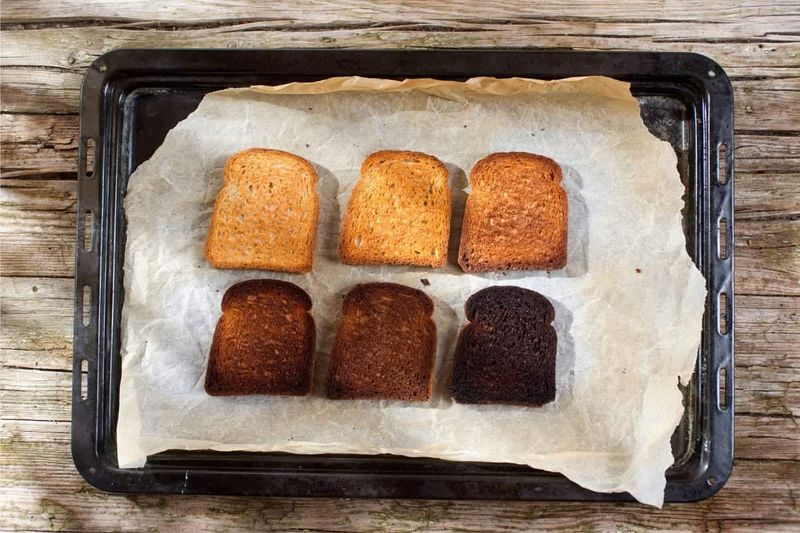
Every oven has its quirks, and hot spots are a common issue. Uneven heat distribution can lead to inconsistent bakes, with some parts overcooked while others remain raw.
Rotating pans halfway through baking helps combat this problem, ensuring even cooking.
Identifying and accommodating your oven’s hot spots can make all the difference in achieving uniformly baked treats every time.
11. Using the Wrong Baking Pan Size
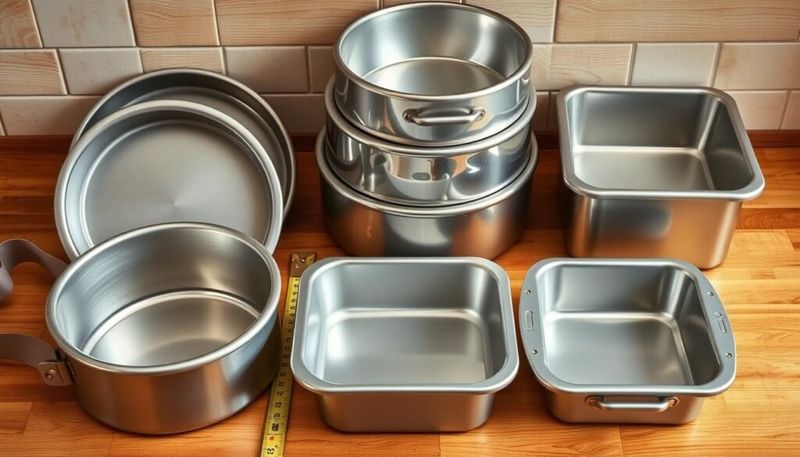
Switching baking pan sizes without adjusting the recipe can lead to disaster. Different sizes require varying bake times and can affect the end result.
Stick to the recommended pan size or make necessary adjustments to cook time and temperature.
A properly sized pan ensures even baking, helping you achieve the desired texture and doneness in your baked creations.
12. Not Greasing Properly
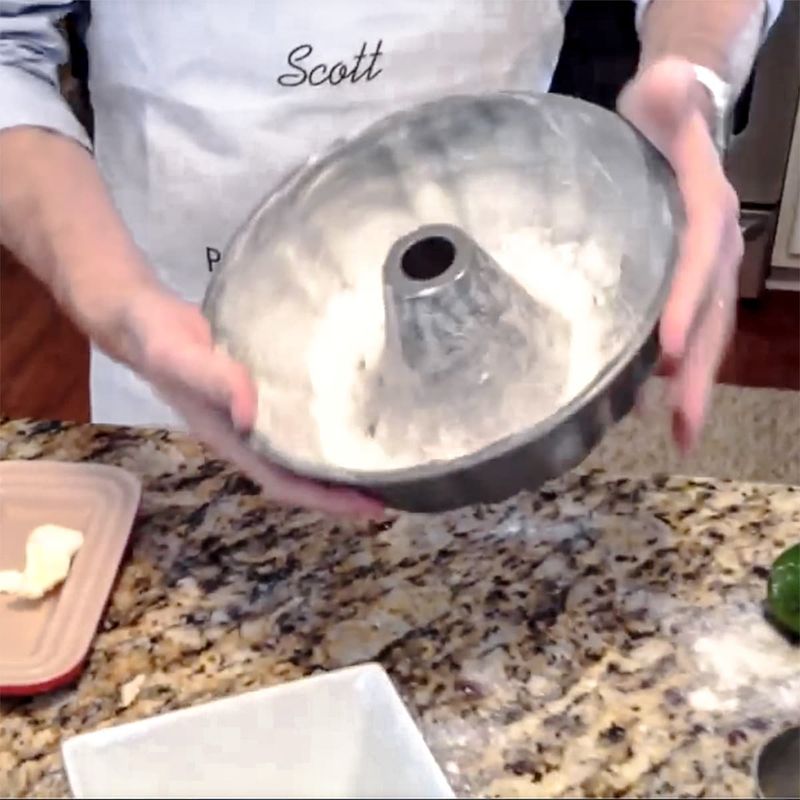
Even nonstick pans need a little help. Properly greasing your pan with butter and flour or parchment paper ensures your baked goods release seamlessly.
A well-greased pan prevents sticking, tearing, and breaking, preserving the appearance of your carefully crafted cake or bread.
Taking the time to prepare your pan can save frustration and ensure pristine results.
13. Skipping the Sifting
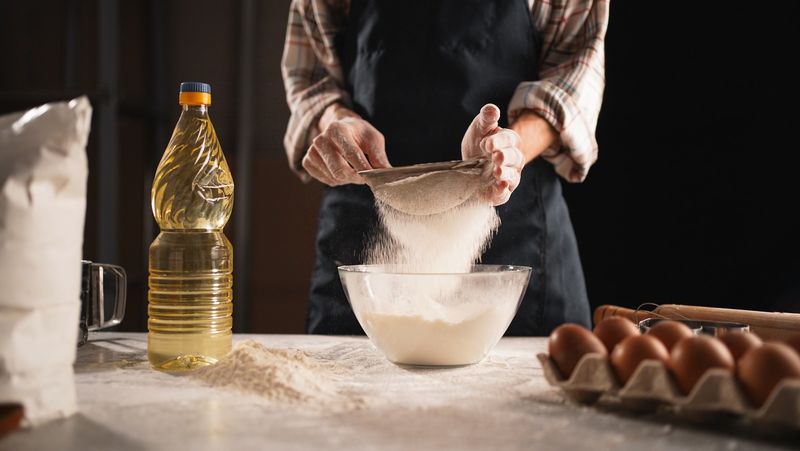
Sifting dry ingredients removes lumps and ensures a light, even texture in your final product. It helps distribute leavening agents evenly, promoting a consistent rise.
Though it may seem like an unnecessary step, skipping sifting can lead to dense, uneven cakes and breads.
Taking the time to sift your ingredients can elevate your baking, achieving a refined and professional result.
14. Forgetting to Cool on a Rack
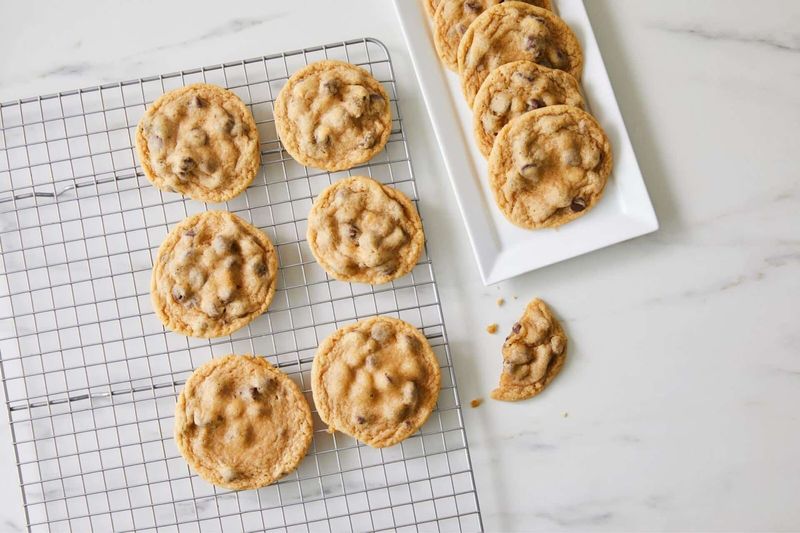
Cooling baked goods in their pans can trap moisture, resulting in sogginess. Transferring them to a wire rack allows air circulation, preserving texture.
A cooling rack ensures your pastry retains its desired crispness or crumbly texture, enhancing the overall taste.
Letting your creations cool on a rack is a simple yet effective way to keep them fresh and perfectly textured.
15. Guessing Bake Time Without a Timer
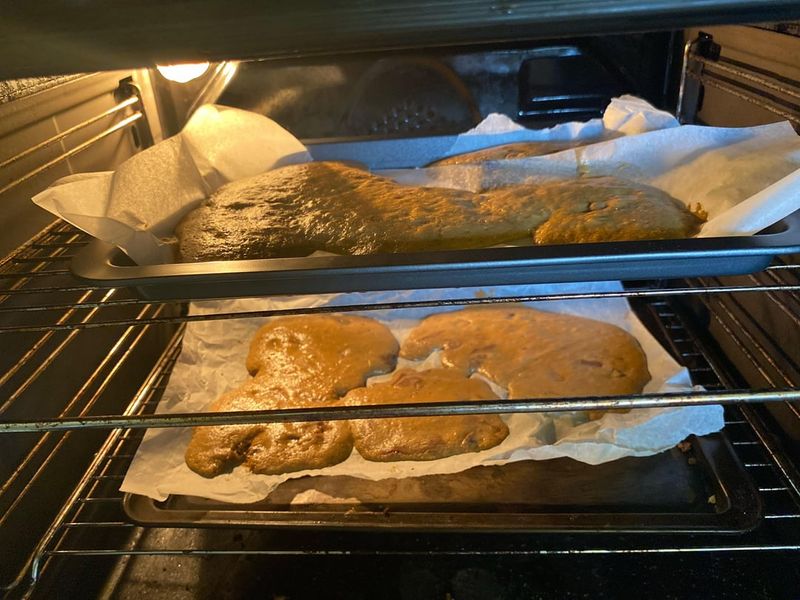
Baking without a timer can lead to underbaked or burnt results. Always setting a timer provides precision, helping you achieve the perfect bake.
Checking with a toothpick or cake tester near the end of the recommended time also aids in ensuring doneness.
Timers are an essential tool in a baker’s arsenal, allowing you to focus on other tasks while your treats bake to perfection.
16. Cutting Baked Goods Too Soon

Slicing into warm baked goods can ruin their texture, causing them to crumble. Allow them to cool fully for flavors to develop and textures to set.
Patience pays off as cooled treats provide a better eating experience, with crumb structure intact.
Waiting might be difficult, but it ensures your baked goods are as delicious and presentable as possible.
17. Frosting a Warm Cake

Applying frosting to a warm cake is a recipe for a melted mess. Frosting will slide off, ruining both appearance and texture.
Letting the cake cool completely is essential for a smooth and even frosting application, allowing flavors to meld.
For best results, chill the cake slightly before frosting, ensuring a professional finish and delectable taste.
18. Not Calibrating Your Oven
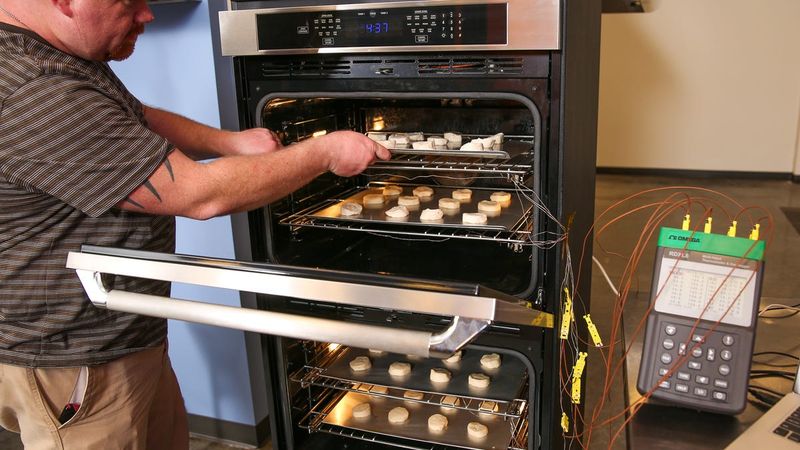
An oven that runs hot or cold can sabotage your baking. An oven thermometer is an invaluable tool to verify your oven’s accuracy.
Adjusting the temperature based on the thermometer’s reading ensures consistent and reliable baking results.
Calibrating your oven can transform your baking, helping you achieve the perfect bake every time.
19. Using Salted Butter When Unsalted Is Called For
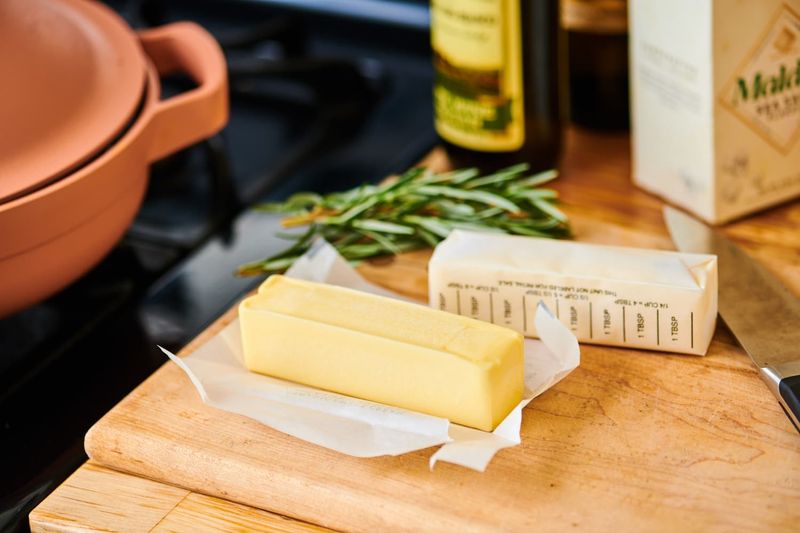
Substituting salted for unsalted butter can alter the flavor balance in your recipe. Reducing added salt can help, but it’s not always a perfect fix.
Using the right type of butter ensures the intended flavor profile, providing a more controlled taste experience.
When in doubt, opt for unsalted butter to maintain recipe integrity and achieve the best flavor.
20. Overbaking “Until It Looks Done”
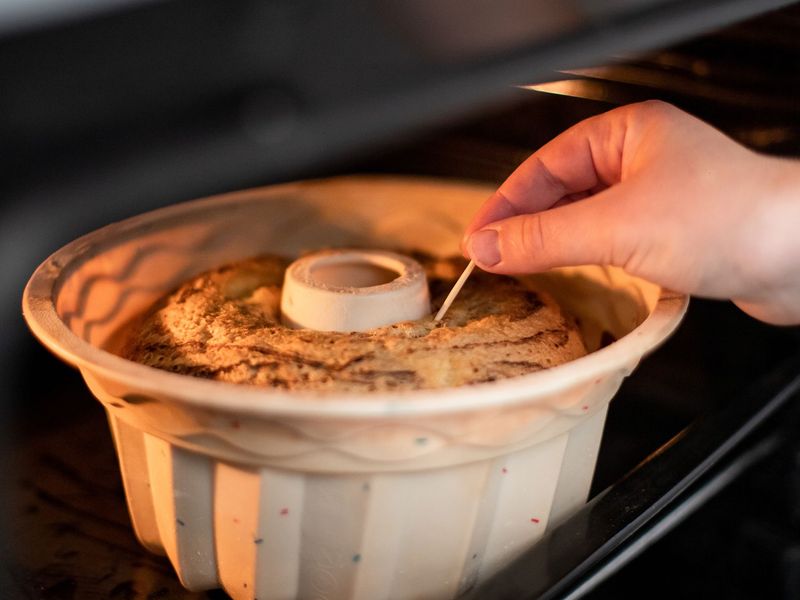
Baking until it looks done can result in dry goods. Pull items from the oven when they’re just set, allowing them to finish cooking as they cool.
A toothpick test, coming out with a few moist crumbs, is a better indicator of doneness.
Proper timing ensures that your baked goods retain moisture and achieve the perfect texture, satisfying every bite.
21. Not Reading the Entire Recipe First
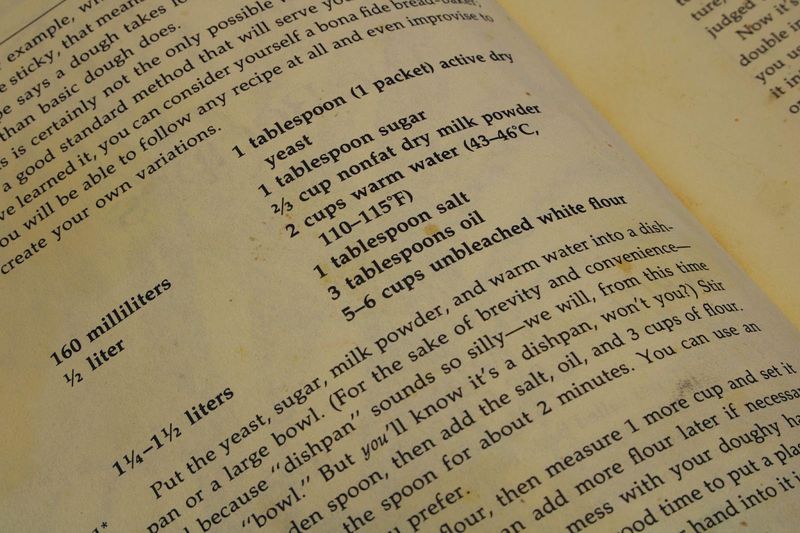
Jumping into baking without fully reading the recipe can lead to overlooked steps or missed ingredients.
Understanding the process before starting helps streamline your workflow and ensures nothing is forgotten.
Proper preparation is the first step to baking success, allowing you to gather all necessary tools and ingredients for a seamless experience.
22. Measuring Brown Sugar Incorrectly
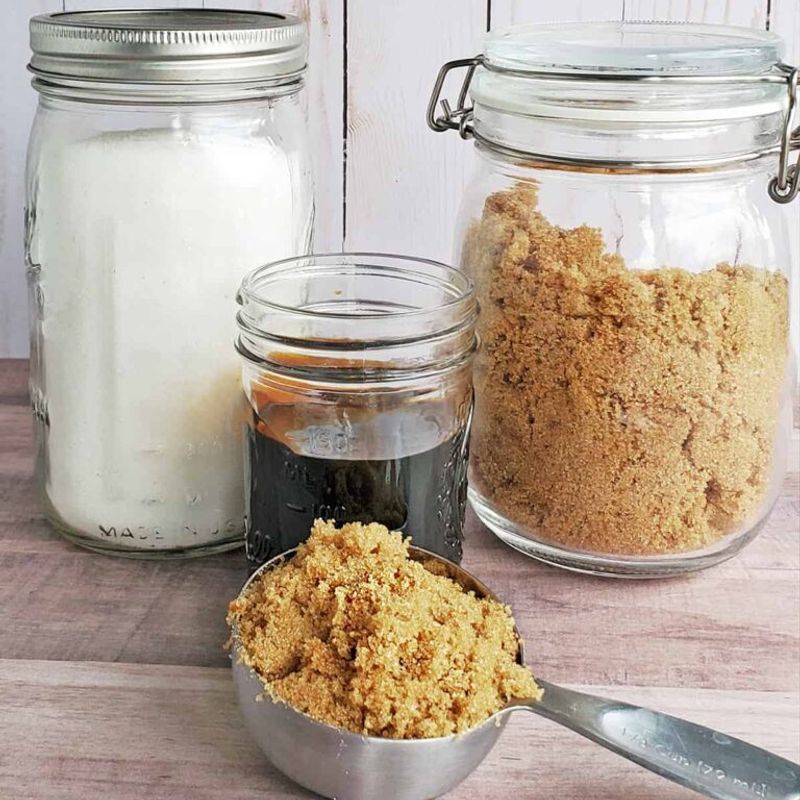
Brown sugar should be packed tightly into your measuring cup, not left fluffy, to ensure accurate sweetness levels.
Improperly measured brown sugar can throw off the flavor balance in your baked goods, leading to inconsistent results.
Precision in your measuring techniques is crucial for maintaining recipe integrity and achieving the desired taste.
23. Not Letting Dough Rest or Chill
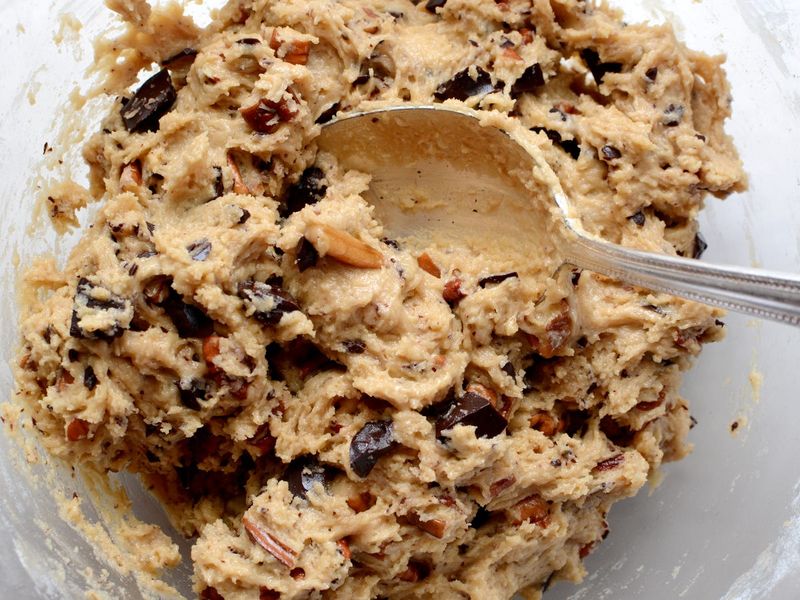
Skipping the resting or chilling step can lead to flat, tough cookies. Allowing dough to rest helps gluten relax and flavors to meld.
Chilled dough spreads less during baking, resulting in thicker, chewier cookies.
Patience pays off, as rested dough yields superior texture and taste, enhancing your baking results.
24. Not Adjusting for Altitude or Humidity
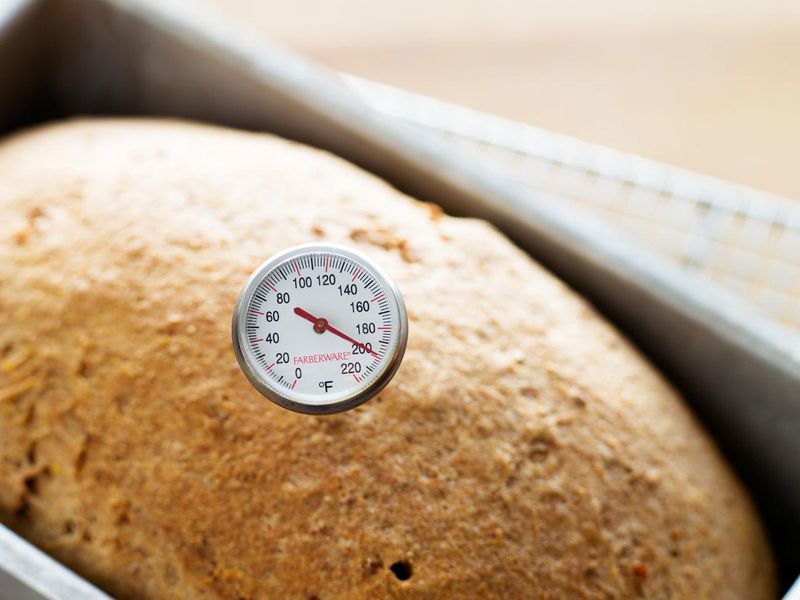
Baking at high altitudes or in humid conditions requires adjustments to recipe ingredients and bake times.
Ignoring these factors can lead to failed bakes with unexpected textures.
Understanding your environment and making necessary adaptations are crucial for successful baking, ensuring your creations turn out perfectly no matter where you are.
25. Relying Too Much on Visuals
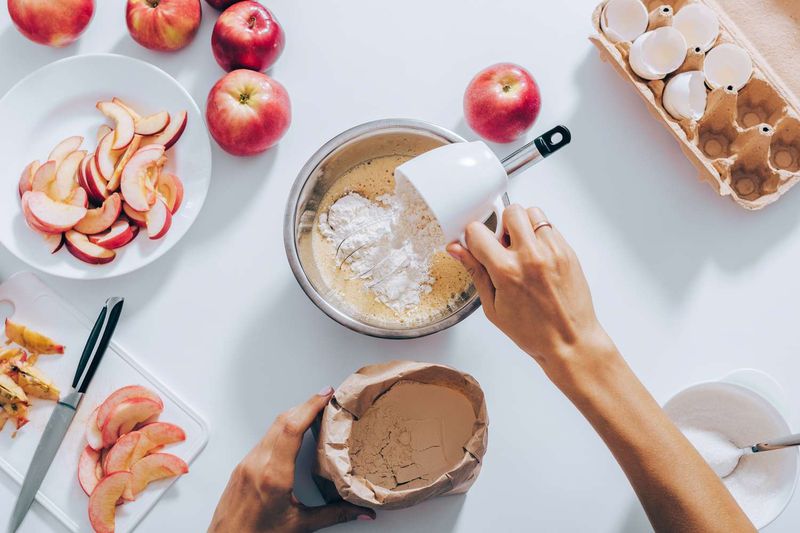
Relying solely on appearance can lead to overbaked or underbaked goods. Touch, smell, and sound offer better indicators of doneness.
A hollow thump on bread or a gentle spring back on cakes can confirm readiness.
Using multiple senses ensures your baked goods are perfectly cooked, enhancing your overall baking experience.
